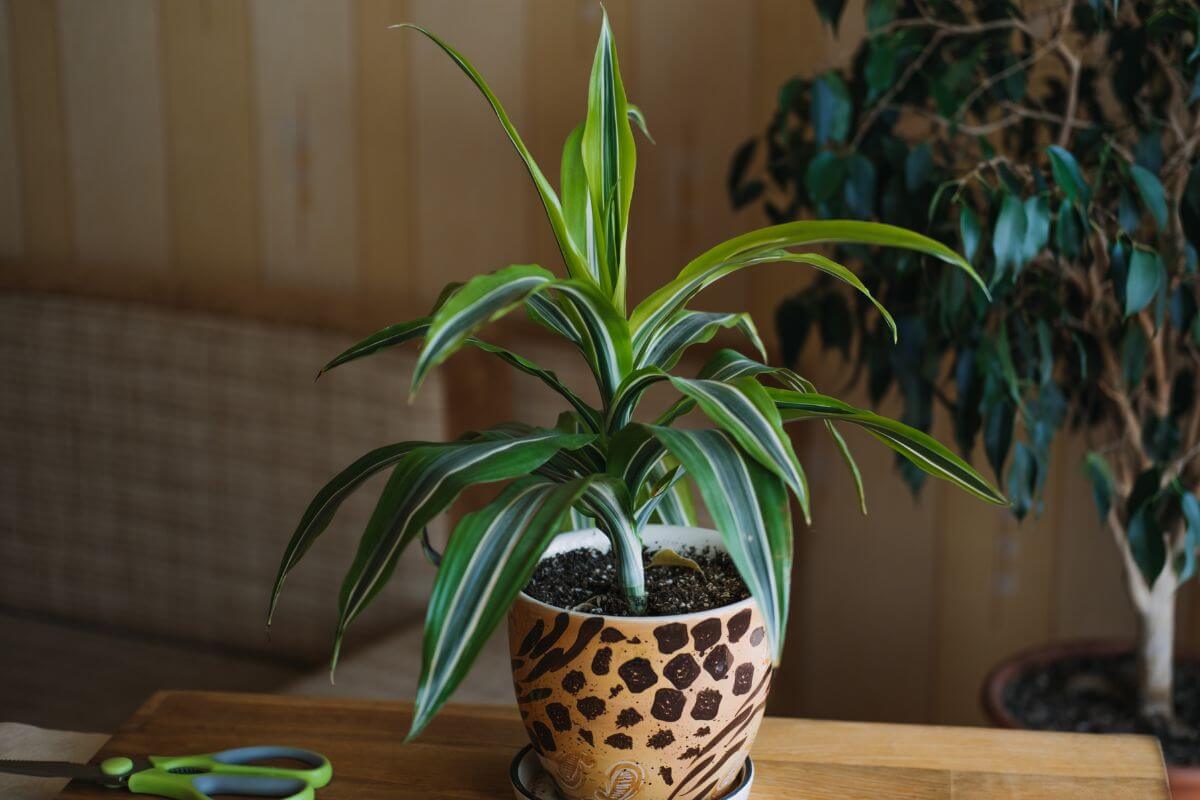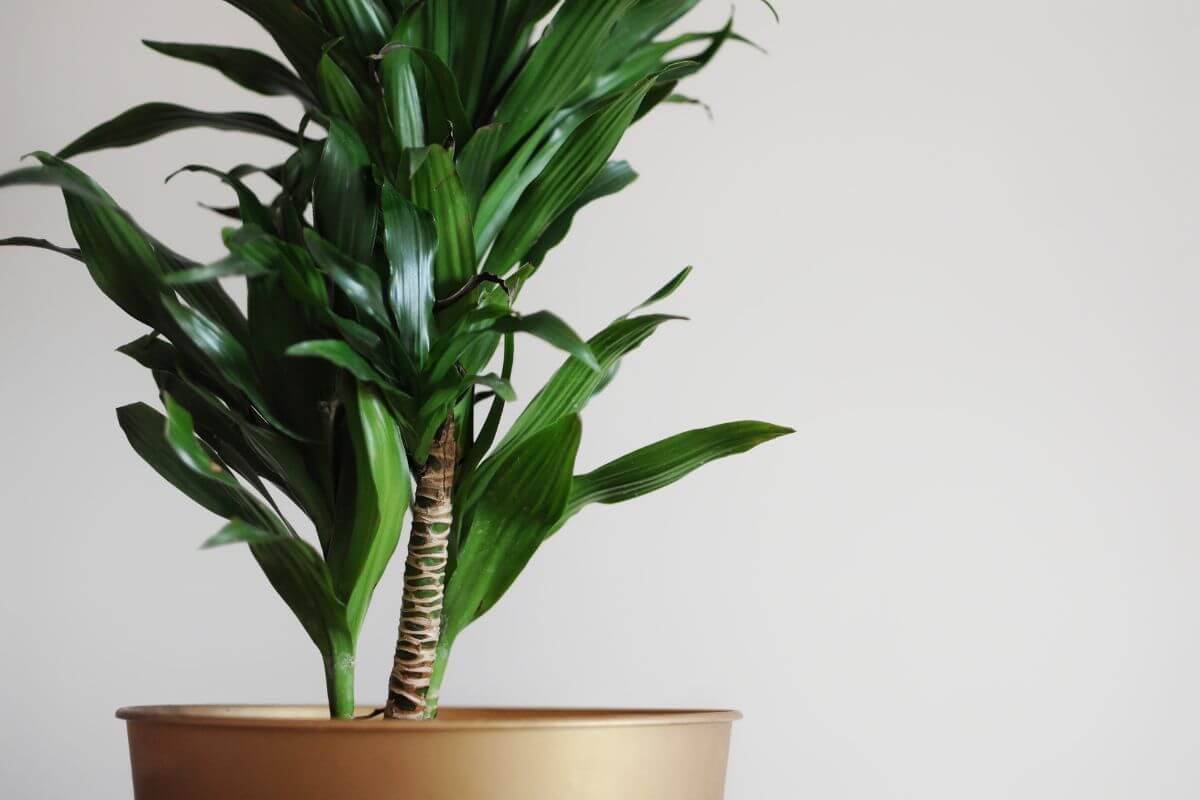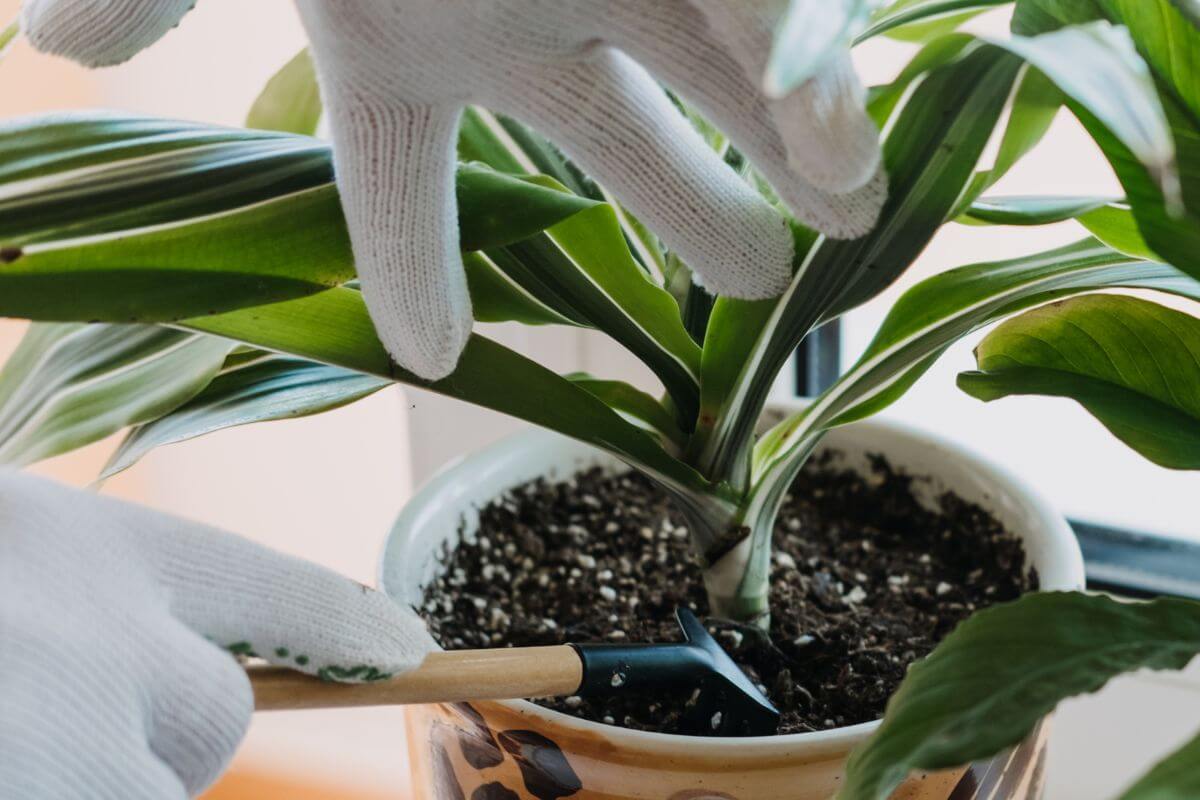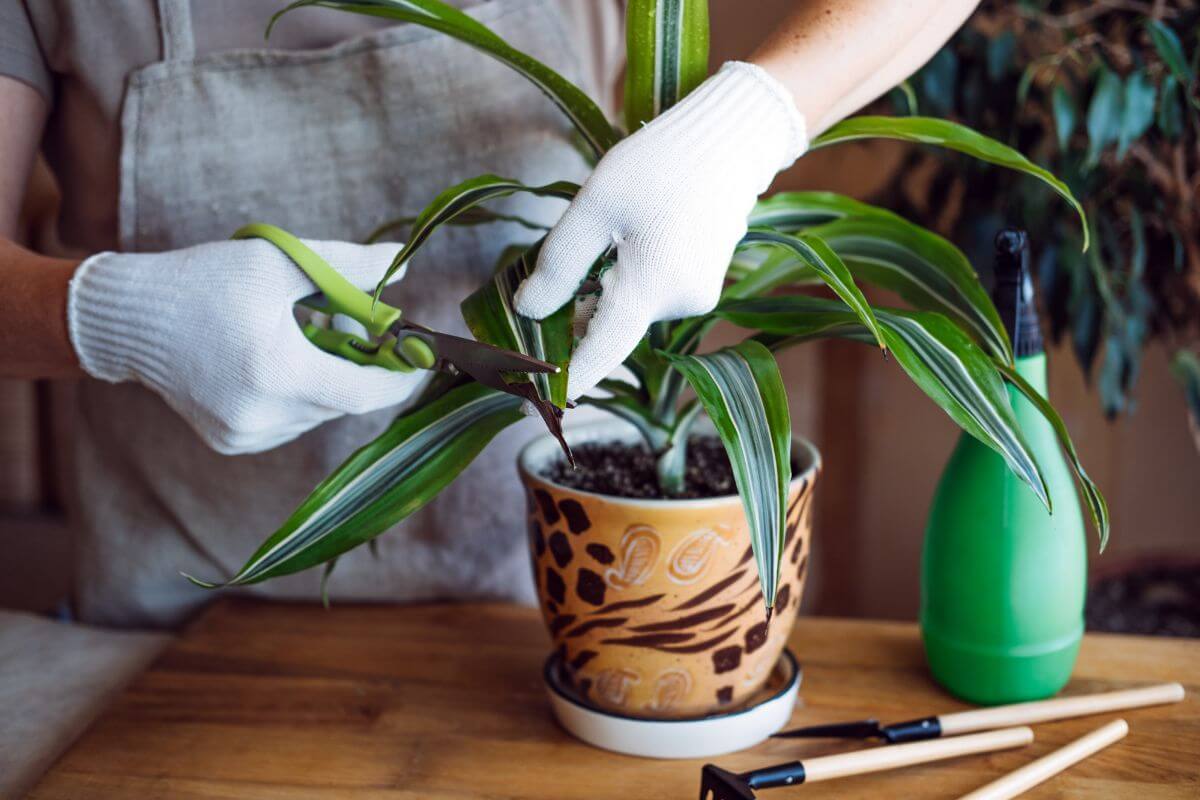The Corn Plant, botanically known as the dracaena fragrans is a favorite among indoor plants. Dracaena fragrans is an evergreen shrub native to tropical Africa. It has been introduced into many other parts of the world where it is widely grown in gardens for its attractive foliage and flowers.
The dracaena fragrans plant is easy to grow and care for indoors or outdoors. This plant can be kept inside during winter months if you live in areas with cold winters. In warmer climates, this plant will do well outside year round.
This guide will teach you how to care for dracaena fragrans and how to grow it indoors.
Dracaena Fragrans Overview

Officially named in the 1790s after the ancient Greek Drakaina, they have been a staple in European households since the middle of the 1800s. They made their way into US households at the beginning of the twentieth century.
A member of the Asparagaceae family, there are well over a hundred varieties of dracaena plants to choose from. Some other popular ones include:
- Dracaena fragrans Massangeana – The most common of corn plant varieties, the leaves feature a yellowish lime green that runs right down the center. They produce fragrant flowers when grown outdoors.
- Dracaena fragrans Lemon Lime – The leaves of the “Lemon Lime” have white and yellow stripes alongside green centers.
- Dracaena Limelight – This particular cultivar has yellow-green leaves that are glossy and as the plant matures the leaves will turn lighter lime green in color.
- Dracaena fragrans Lindenii – The leaves of this variety are recognized by the yellow edges of the leaves.
- Dracaena Reflexa – This variety boasts pointy, narrow leaves in a deep green tint with bright yellow stripes.
- Dracaena Victoria – Very similar to the Massangeana cultivar, the leaves feature a yellow stripe down the middle, but the leaves will be wider, smaller, and almost triangular. This is not a variety that is easily found commercially.
- Dracaena marginata – Commonly known as the Dragon Tree, this highly popular houseplant is known for its long and large leaves. Read all about How to Care for the Dragon Tree.
An evergreen tree, these plants grow relatively slow, and have one or more canes or stems that boast long slender leaves at the plant’s top. They resemble a small palm tree in appearance and as result are also called “false palms.”
Tall and narrow, they fit comfortably into homes and apartments, growing anywhere from four to six feet in height while in containers. As houseplants, they will rarely bloom flowers.
The mature size of the plant outdoors can range from fifteen to fifty feet tall and three to ten feet in width.
Dracaena Fragrans Plant Care
The dracaena fragrans is usually grown as a large potted plant, rather than as an outdoor plant. These plants will thrive in indoors with bright indirect light. They should be protected from direct sunlight and drafts.
Flows of air from either heating vents or air conditioners can shock the plants with extreme temperatures that can negatively affect it. They also appreciate high humidity indoors.
The plant can be transferred outdoors in the summer if it is positioned in a shady, sheltered location. It should be protected from any potential strong winds or breezes. Should your area’s temperature fall below 50° Fahrenheit, bring your plant back inside the house.
Soil for the Dracaena Fragrans
The best soil mix will be loose and loamy for these plants. Keep the soil moist, but it should have good drainage because the roots will suffer if left standing in water.
Soil should be slightly acidic with a pH level between 6.1 to 6.5.
Light for the Dracaena Fragrans

The best indoor location for the dracaena fragrans is by a sunny window with bright indirect sunlight. If it is exposed to direct sunlight, the plant can risk being burned and will wilt as a result.
Too little light will cause the Dracaena’s leaves to lose color variegation and may also stunt the growth of the plant.
Temperature for the Dracaena Fragrans
Corn plants will thrive in temperatures between 60 and 75°F. They should not be exposed to temperatures that fall below 50°F.
If you do like to move your dracaena fragrans outdoors during the summer months, be sure to bring it back inside before the outdoor temperature drops.
Water and Humidity for the Dracaena Fragrans
The soil bed should be kept moist from the spring through the fall however, the soil should not be soggy. Towards the end of the fall and throughout the winter months, watering should be reduced.
The soil should not be allowed to dry out completely either. Should the soil be either too wet or too dry, leaf tips may turn brown. A weekly watering or bi-weekly watering should be sufficient.
Dracaena fragrans plants are highly sensitive to fluoride and boron in tap water. It is better to use distilled water to help avoid stunted growth, leaf tip burn, and even the death of the plant. Rainwater is another option as good water to use.
The ideal humidity level for the dracaena should be between 40 and 50 percent. This is their native environment’s humidity level.
To raise humidity levels, use a humidifier or a pebble tray with water underneath the plant’s container, making sure that the container does not touch the water but rests above it. You can also lightly mist the leaves regularly.
Fertilizer for the Dracaena Fragrans
The dracaena fragrans really loves soil that is rich in organic matter. You can use a liquid soluble fertilizer monthly during the growing season.
In the winter when growth is slower, you can avoid feeding or doing so sparingly.
Dracaena Fragrans Pruning and Repotting

Somewhere between two and three years of age, the leaves at the bottom of the dracaena fragrans will begin to yellow to complete their normal lifespan. When they become unsightly, just trim them off.
Should the plant grow to be too tall for your home or office space, you can cut off the tops of the canes. Buds of new leaves will appear where you have pruned.
The corn plant should be repotted every year or two. Here’s how to repot the plant:
- Choose a slightly larger container than the old one
- Remove the plant from the old pot.
- Remove any loose soil around the roots
- Place it in the new pot. Be gentle with the roots.
- Fill in the new pot with new potting soil. Do not pack it tightly, so that the pot maintains good drainage.
Propagating the Dracaena Fragrans
These plants grow very easily from stem cuttings. Using a cutting that is several inches in length, place it in warm, moist soil. You can treat the end of the cutting with root hormone to facilitate the process. The rooting process will require time, so be patient.
Dracaena fragrans can also be rooted in water where it will be less likely to dehydrate. The new roots will grow accustomed to the water, so if you transplant it to soil, it’ll need to re-adapt to life soil.
Dracaena Fragrans Toxicity and Pets
Dracaena fragrans leaves contain saponin compounds and in the bark. The toxic substance can cause various problems for the family cat or dog.
While not considered toxic to humans, some people may be allergic and have a reaction from touching the plant.
Symptoms of poisoning in your pets may include
- Vomiting
- Anorexia
- Depression
- Excessive salivation
If you notice any of these symptoms or have witnessed your pet ingesting any part of the Dracaena plant, call your veterinarian immediately.
Dracaena Fragrans Pests, Diseases, and Problems

A common problem with the dracaena fragrans is the appearance of brown leaf tips. This will often happen if it receives fluoridated water. Leaf discoloration can be caused by a calcium deficiency or by inadequate watering.
If the corn plant begins losing its leaves, the first thing to consider is a water issue, whether it’s overwatering or too little watering. Other reasons for leaves dropping are extreme temperatures, cool drafts or too much heat.
When the corn plant is overwatered, root rot may set in. You will need to remove the plant from the soil including all of the roots. Should the roots appear black, fragile, and mushy, they are rotting indeed.
To help revive the roots, rinse them in room temperature water. The sick ones should fall off easily. Trim off any remaining rotted roots with gardening shears.
If you need to cut off a large part of the roots, also cut off one-third- to one-half of the leaves on the plant. Throw away the old soil and clean the pot thoroughly. Replace the plant in fresh potting soil with clay potting pebbles to help with drainage. Make sure the pot has a sufficient number of drainage holes.
Another bacterial disease the dracaena fragrans is susceptible to is Soft Rot, caused by Erwinia carotovora. It will lead to soft brown spots on the roots and at the base of the cane. There may also be an odor. Unfortunately, there is no cure, so infected plants should be disposed of.
Leaf Spot, caused by Fusarium moniliforme is a common fungal infection. It will cause brown spots on young leaves. Spots may appear reddish-brown with yellow or tan rings. In this case, always water at the base of the plant, never from above, and discard any excess water at the base of the pot.
Typical pests include the spider mite, scale insects, aphids, and thrips, as is true with most houseplants. Leaves will begin to look damaged and unhealthy. You may even see insects wandering around your plant.
It is important to dust the leaves regularly with a moistened cloth. This will disrupt the environment for pests.
For a mild pest infestation, spray the plant with a strong stream of water every few days as long as the pests are present. For a heavy infestation use insecticidal soap or neem oil.
Dracaena Fragrans Care Final Thoughts
The Dracaena is a houseplant that is popular for its attractive foliage. They require little care and maintenance, making them an ideal choice for beginners and those who don’t have a great deal of time to dedicate to their plants.
See these other houseplant guides to grow around home:
Dracaena Fragrans Care FAQs
Does the Dracaena fragrans need sunlight?
Yes! If you want your dracaena to thrive indoors, make sure it gets plenty of bright indirect light. A bright window sill works well if you can place it near a south facing wall. Otherwise, try placing it under fluorescent lights.
How often does Dracaena fragrans flower?
A dracaena fragrans will usually flower once a year when grown outdoors. When grown indoors, it’s rare that it will flower. If you’re cultivating the corn plant indoors, take it outdoors as much as you can to give it a chance to flower.
Do Dracaena like coffee grounds?
Dracaena plants can enjoy coffee grounds because dracaenas like slightly acidic soil. Coffee grounds are highly acidic, so don’t add too much to the soil as the soil will become too acidic.
How long do Dracaena fragrans live?
If properly cared for, a dracaena fragrans can last up to 10 years. However, the normal life span of the leaves are somewhere between two and three years of age. The leaves at the bottom of the dracaena fragrans will begin to yellow when it’s near the end of its life. When they become unsightly, just trim them off.


